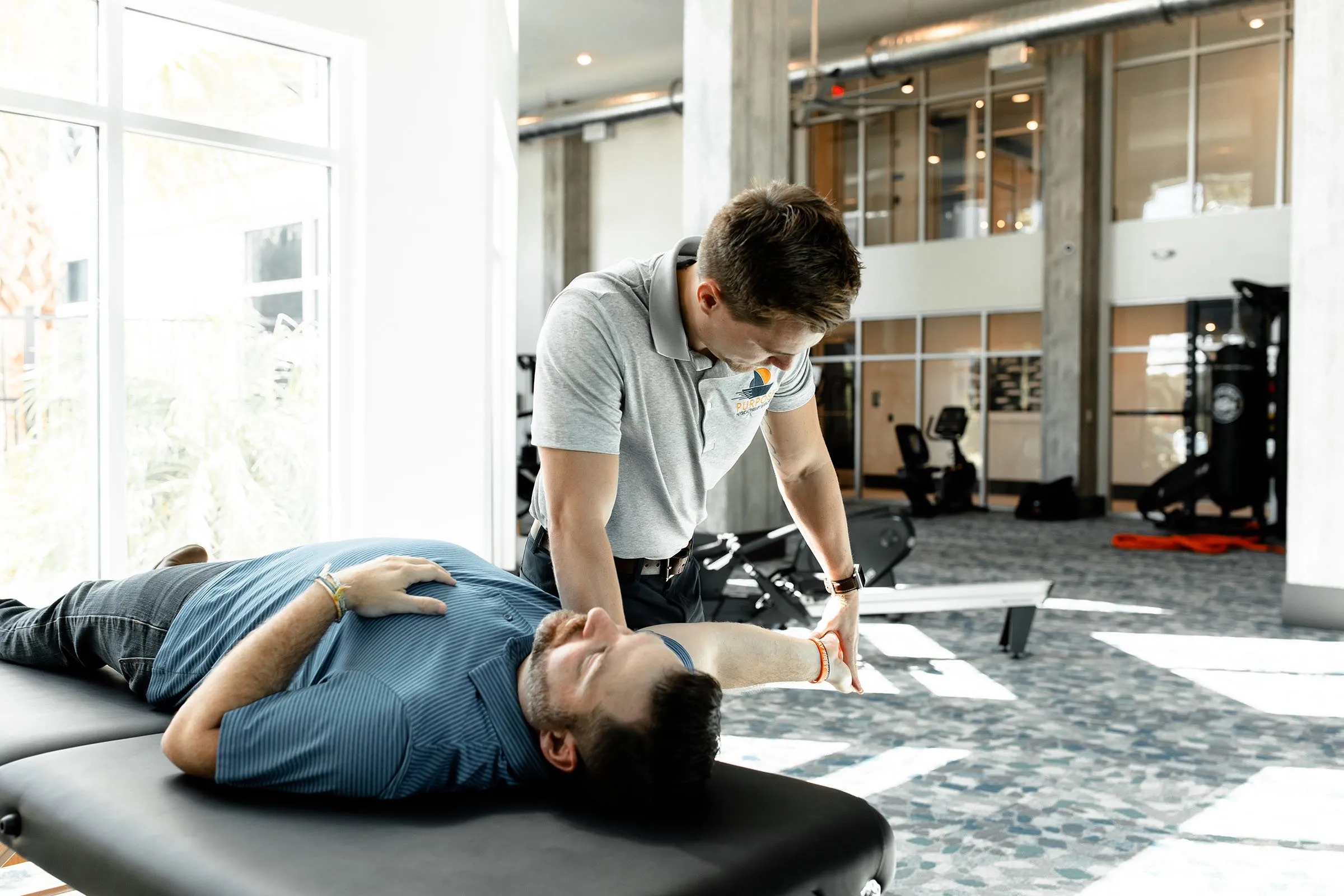If you’ve been hesitant about getting that muscular injury or joint pain treated because it seems like it’d take a great deal of money and time, you should know that you have more options than you may think. In Florida, you don’t necessarily have to go through a physician (and therefore potentially face a ton of expensive and time-consuming tests and referrals) in order to get started with an effective physical therapy plan. That’s where primary care physical therapy comes in. What is a primary care physical therapist, and how would that kind of treatment even work? In this post, we’re deep-diving into what it means to have direct access to a primary care physical therapist, and what this can do for your overall health and mobility. Let’s get started.
Direct Access Explained
The majority of people experiencing muscular or joint pain tend to go to their primary care physician first. What many people don’t know is that you don’t necessarily have to go through multiple doctor’s visits and expensive tests in order to be able to see a great physical therapist. This is due to direct access, which is the ability to see your physical therapist without a referral or prescription from your doctor.
Direct access is regulated at the state level. According to Florida law, you have the ability to see a physical therapist directly without a physician’s prescription for 30 days. If the condition requires treatment beyond the 30 days, a signed prescription or referral from your doctor will be required to continue. This means that getting physical therapy care – and, as a result, solutions for relieving pain and improving mobility – can be instantaneous. If the issue you’re experiencing persists, or you would simply like more time with your physical therapist in order to continue improving your movement, a physician’s consultation is required.
What It Means to Have a Primary Physical Therapist
Direct access can lead to higher satisfaction and better outcomes for patients. With direct access, getting physical therapy care – and, as a result, solutions for relieving pain and improving mobility – can be instantaneous. You’re able to tackle the root cause of your pain with a licensed professional without going through the wringer of pricey tests and time-consuming referrals (which are likely to lead you to a physical therapist anyway). If the issue you’re experiencing persists, or you would simply like more time with your physical therapist in order to continue improving your movement, a physician’s consultation is required.
On top of that, the quality of the care you’re getting is the same as if you were to go to an MD specialist. PT’s and Orthopedic surgeons are virtually equal when it comes to diagnosis accuracy (and both are better than non-orthopedic providers).
- Doctors of physical therapy are trained in differential diagnosis. This means that they are competent in screening for red flags, and they understand when to refer you back out to an appropriate physician if necessary.
- Numerous studies show that physical therapy is just as effective, if not more effective, than surgery for many muscular and orthopedic conditions, including knee meniscus tears, lumbar spinal stenosis, and knee arthritis
Finally, by going straight to a physical therapist as your primary care provider for an injury, you’re incurring fewer costs and getting faster access to effective solutions. If you were to go through your primary care physician, then an orthopedic specialist, then a physical therapist, you would have spent significantly more time and money to end up at the same doctor’s office at the end.
When you take all of these factors into account, it’s clear that a Doctor of Physical Therapy lends itself to fill a very important role in primary care, hence the term “primary physical therapist.” If you already have a busy schedule and have been putting off getting an injury checked out by a professional, going to a physical therapist first is an excellent choice; it allows you to start working on pain reduction and mobility improvement right away.
Going to a physical therapist first to get started on treating that pain or injury is an effective option that can save you both money and time. Let’s quickly review why that’s the case:
- Research suggests that patients who saw a physical therapist first through direct access vs. a physician’s referral had better outcomes and higher satisfaction ratings.
- Primary physical therapy gives patients quicker access to care, less associated costs, and a reduced need for at times-unnecessary medical services, including advanced imaging, injections, and pain medications.
So, what is a primary care physical therapist? The short answer: someone who can make all the difference in your pain management and mobility right away.
To learn more about obtaining quality primary physical therapy or to find out what model of physical therapy works best for you, don’t hesitate to click here and schedule a free consultation with us.


